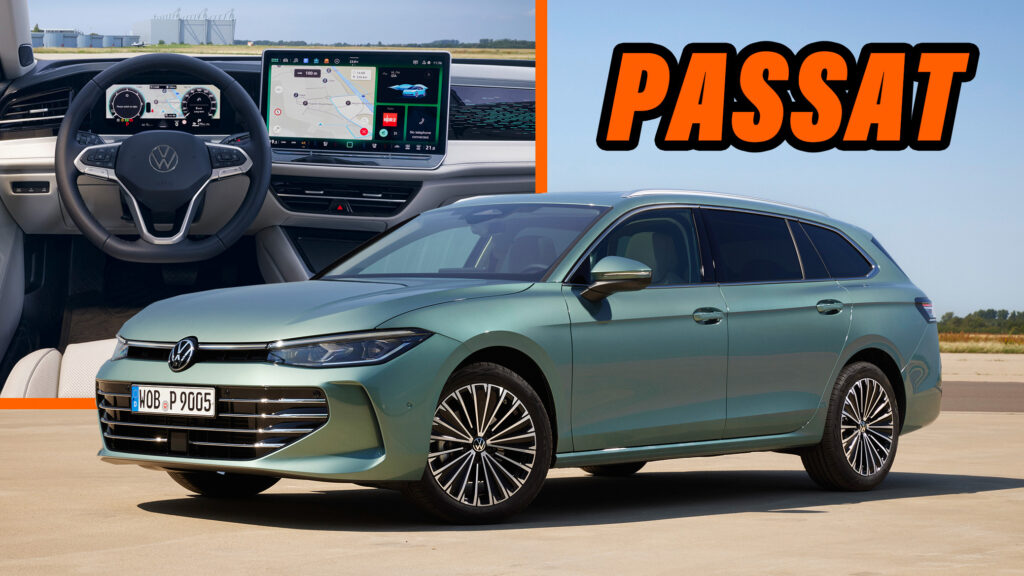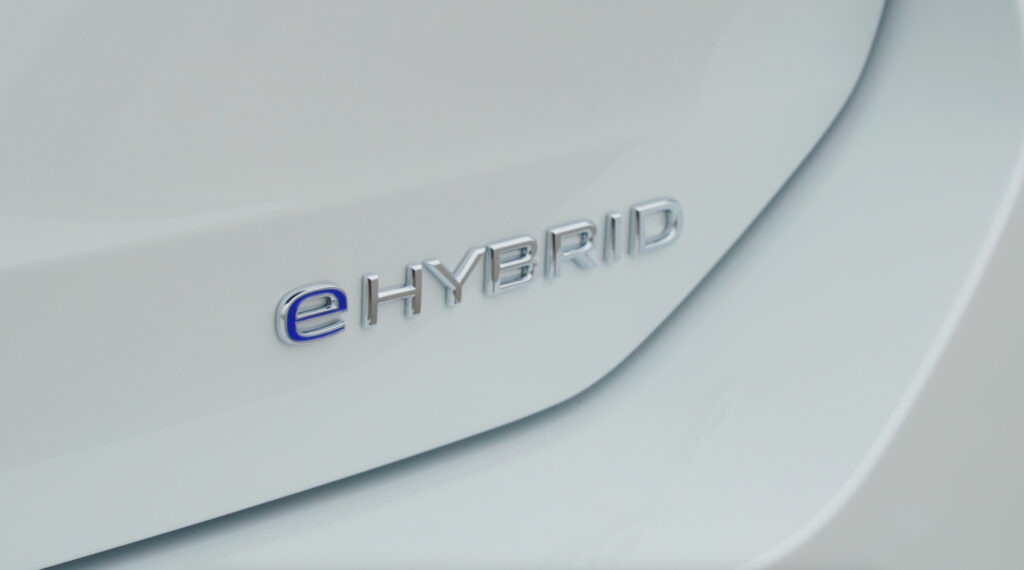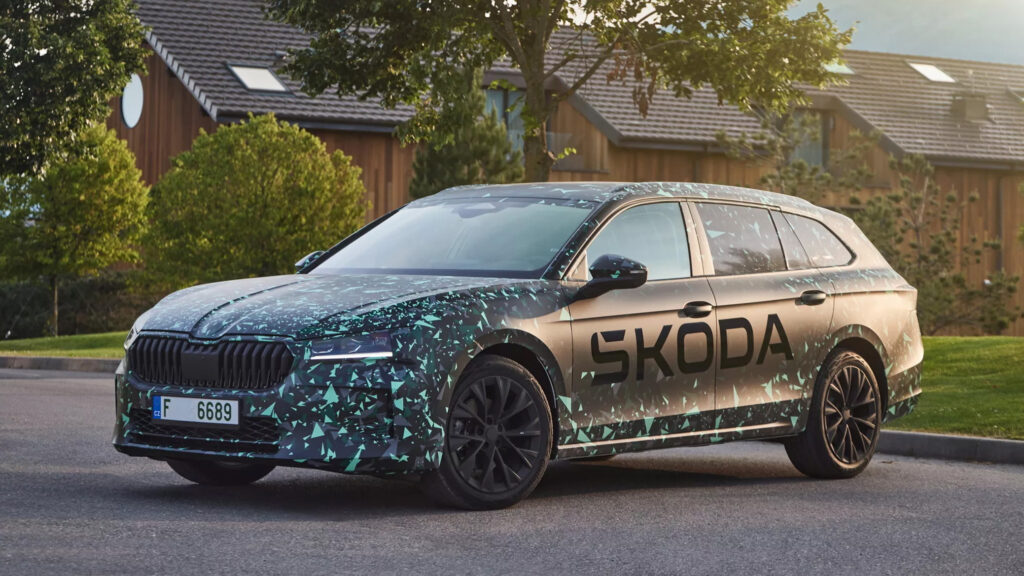No-nonsense sister to upcoming Skoda Superb gets PHEV options with up to 62 miles of electric range
5 hours ago
 –>
–> 
–>
The Passat name might have disappeared from the brand’s North American lineup, but it still has a solid following in Europe among family buyers with traditional tastes and business drivers. VW has sold more than 30 million Passats since the first one appeared in 1973, but adding to that total has meant some important changes for the latest car, which goes on sale in spring 2024.
This time around it comes exclusively as a wagon and the Passat’s production line was unceremoniously evicted from its Emden, Germany, home to make way for the ID.4 and ID.7. If that’s a sign of VW’s shifting priorities, then so is VW’s decision to outsource the design of the Passat to sister brand Skoda, whose upcoming Superb is twinned with the VW, and which will be built alongside it in VW’s Bratislava plant.
Electrified, But Hardly Electrifying
Related: The VW ID.7 Is An Electric Passat For A New Generation
advertisement scroll to continue
The last Euro Passat was launched way back in 2014 so with the new one VW had the opportunity to upgrade to the company’s modern MQB Evo platform. It’s the one used on cars like the Mk8 Golf, upcoming Tiguan and Audi’s A3, and opened up new possibilities for hybrid power and driver assistance systems on the Passat, which also gets a 2.0 inches (50 mm) wheelbase stretch over the outgoing model.
Gone are the old car’s straight lines and in comes a curvier look, a shift that will be replicated in the new Tiguan SUV that’ll make its debut later this year. While the narrow upper grille looks modern (and visually connects the Passat to the Golf) and the combination of the wide lower grille and swept-back headlights gives the Passat B9 some attitude at the sharp end, the rest of the car is entirely unforgettable, looking like a slightly less less beige version of MG’s budget 5 EV.
62 Miles OF PHEV Range

But unlike the MG5, the Passat isn’t available as a pure EV. That’s the job of the new ID.7, which, unlike the Passat (and MG) will be available in both sedan and wagon configurations. Passat drivers will still be able to drive for extended periods on electric power though, provided they go for one of the two available PHEV engine options. Combining a 19.7 kWh battery pack with a 1.5-liter petrol engine, they develop 201 hp (204 PS) and 268 hp (272 PS) and can travel up to 62 miles (100 km) without touching a drop of gas.
Other engine options include a mild-hybrid 1.5 eTSI (148 hp / 150 PS), a pair of 2.0 TSI motors kicking out 201 hp (204 PS) and 261 hp (265 PS), and three turbodiesels ranging from 120 hp (122 PS) to 190 hp (193 PS). Only the top-spec 2.0-liter petrol and diesel options break from the FWD convention to deliver all-wheel drive traction, but whichever powertrain you go for it’ll be backed by a dual-clutch transmission controlled by a new stalk-mounted shifter.
More Space For Screens And Legs
The new Passat’s wheelbase stretch means more room for passengers to stretch out. Rear legroom has grown by a couple of inches (50 mm) and the luggage space – always a major draw for Passat buyers – has increased by 40 liters (1.4 cu-ft) to 690 liters (24.4 cu-ft) with the seats up, and by 140 litres (4.9 cu-ft) to 1,920 liters (67.8 cu-ft) with them folded flat. That makes the Passat more cargo-friendly than both the ID.4 and outgoing Tiguan.
You might have also heard VW bragging about the size of its new touchscreen, and it’s true, the 15-inch tablet looks impressive. But go for an entry-level Passat and you’ll find a less spectacular 12.9-inch display on the dash, although you’ll still get a digital instrument cluster with three different graphic styles to flick between.
And praise be, there’s no sign of the MK8 Golf’s nasty touch-sensitive steering wheel buttons. The Passat gets proper old-fashioned wheel switches, though putting the new gear shifter on the right-hand stalk means the wiper and turn signal functions have to share the left-hand one, so there’s still scope for VW fans to get annoyed with VW’s meddling.
Four Trims Topping Out With R-Line
Related: Leaked 2024 Volkswagen Tiguan Images Reveal Camo-Free Curves
The base Passat doesn’t come with a ton of luxury kit, but it does have the safety angle covered thanks to features like adaptive cruise control, LED headlights, parking sensors, auto braking, lane-keeping and road sign recognition. But step up to Business – a clear reminder of who buys most Passats – and you gain three-zone climate, more USB-C chargers, partially electric seats with massage function and assistance with lights and parking.
Beyond that, you need to choose whether you want to go down the luxury (Elegance) or sporty (R-Line) rabbit holes. Both get matrix LED headlights, a superior set of massage chairs (sports seats in the R-Line), keyless access and smartphone-operated parking. But while the Elegance slums it with teeny 17-inch wheels, the R gets eighteens to go with its more aggressive body kit.
Better Than Superb?

Those wheel sizes are a reminder that while this Passat might be new, the ethos of the model, and probably the mindset of its buyers, is trapped in a bygone age, one that has yet to be taken over by SUVs and EVs. Fleet buyers are focused on saving money and we can’t imagine many seeing the sense in forking out for the optional DCC Pro suspension with its dual-valve adaptive shocks, even if they do improve the ride and handling.
There’s nothing standout about the new Passat. But that’s the point. It’s as solid, no-nonsense car for buyers who aren’t interested in posing or being fashionable. The questions is, will those same buyers be better off in its Skoda Superb sister, which might well arrive with more equipment and a lower price. We’ll find out when Skoda pulls the covers of the Superb very soon.

 <!–
<!– –>
–> 
